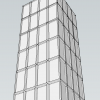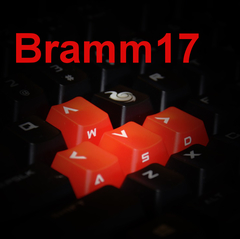-
Posts
220 -
Joined
-
Last visited
Reputation Activity
-
 tycheleto reacted to kkpatel87 in LTT Storage Rankings
tycheleto reacted to kkpatel87 in LTT Storage Rankings
Hardware
CASE: Silverstone DS380B
PSU: SFX ST45SF-G 450W Full Modular
MB: Asrock C2550D4I
CPU: Intel Atom C2550 2.4 GHz Quad-Core
HS: Stock
RAM: 32GB ECC 4x8GB (Phase 2 will go to 64 GB)
RAID CARD: LSI 9211-8i, flashed with IT firmware
SSD: 64GB Samsung 830 Series SSD
HDD 1: 3x 3TB Mediamax WL3000GSA6472E
HDD 2: 5x 3TB Toshiba DT01ACA300
Software and Configuration:
OS: FreeNAS
Array: 8 x 3TB in RAIDZ2
Usage:
I use this for general storage.
Backup:
This array is backed up to another NAS.
Additional info:
http://linustechtips.com/main/topic/342335-ds380b-nas-build/
Photo's:
http://linustechtips.com/main/topic/342335-ds380b-nas-build/
-
 tycheleto got a reaction from alpenwasser in LTT Storage Rankings
tycheleto got a reaction from alpenwasser in LTT Storage Rankings
Finally gotten around to posting this, although most of the changes were done months ago. Still in the process of setting up new features since I'm currently serving my military commitment and so can only work on it during the weekend. Got a new 24 port Mikrotik switch so starting to explore more into servers and networking.
Original post at: http://linustechtips.com/main/topic/21948-ltt-10tb-storage-show-off-topic/?p=657061
Hardware
CASE: Fractal Design Define Mini
PSU: Seasonic G-360
MB: MSI H77MA-G43
CPU: Intel Pentium G2020
HS: Stock Intel Heatsink
RAM: 8GB DDR3 1600
SSD: Corsair Force GT 60GB SSD
HDD 1: 1x 2TB Seagate Barracuda Green ST2000DL003
HDD 2: 3x 3TB WD Red WD30EFRX
HDD 3: 2x 4TB WD Red Pro WD4001FFSX
Total HDD Capacity: 19 TB
Total Usable Capacity: 15 TB
Software and Configuration:
My server is running Windows Server 2012 R2 Datacenter with FlexRAID Transparent Raid(tRaid) for pooling/array, with the array formatted as ReFS.
The array has the three 3TB WD Red Drives and one of the 4TB WD Red Pros as data drives, with the last 4TB WD Red Pro as a parity drive(13TB Usable, 15TB Total). The last 2TB Seagate is an extremely old drive( 46000+ power on hours and counting) still using NTFS and is just used for Misc storage/Backups/iSCSI to boost my main rig's storage
The array currently has the one 2TB Seagate drive and two 3TB WD Red as data drives, with the last the 3TB WD Red as a parity drive (8TB Usable, 11TB Total).
Usage:
Home Server is used for mainly music(~2TB), Videos(~2TB) and Backups (~2TB+). Most computers access the server via SMB/Windows Server shares with no software. Server used to run Emit Free/Air Playit Server for access on Android/iOS, and runs Plex for videos, but I have not installed this since changing to Windows Server, and will see if I need it in the future. It also has Minimserver+Bubbleupnp for music streaming. It handles backup for 4 other Windows Computers, and also acts as a bit of shared storage for documents and pictures. Am learning to configure Windows Active Directory and iSCSI to help manage the shared storage and give the server more purpose.
Backup:
Currently no backup of entire server. However, most data is replicated in at least one other location to prevent hardware failure from causing data loss.
Additional info:
Status as of Dec 2013: Server is still fairly unstable even after a few months of experimentation. First tried unRAID for a while, but write performance wasn’t sufficient. Moved to Real Time Raid for FlexRAID, but kept having errors, to the point I was recalculating my entire parity at least once every 2 or 3 days. Moved to tRAID to see if it improves stability, but still a work in progress as tRAID is still in the RC stage. Waiting for tRAID to reach full release before I finalize the software setup.
2014 April Update: Server has been very stable past few months, had a period where it stayed on for 48 days in a row. Transparent RAID is being continuously updated, so getting small performance increases every now and then. Just had a disk failure last week, which made me realize that I had my drive labels wrong, and had to reconfigure the entire array, but should be good now.
2015 March Update: Server had another Seagate drive fail in the past year, which means all except the extremely old 2TB Seagate Barracuda Drives have failed. They just don't seem to be as reliable since they switched to 1TB Platters. As such, have moved to WD Reds/Red Pros, which seem much better for the array. Was having a weird issue where one of the Red Pros kept dropping out of the array, yet it was passing all tests. Hasn't occurred since the switch to Windows Server so will monitor it for a while. Have a 1TB WD Black I might want to add to the server to make it a nice round 20TB, and I'm trying to get a small 60GB or 120GB SSD for a transparent raid landing disk, but haven't found the time to get one yet. Hopefully soon.
Photo's:
-
 tycheleto got a reaction from alpenwasser in LTT Storage Rankings
tycheleto got a reaction from alpenwasser in LTT Storage Rankings
Have an update coming very soon that should move me a bit up the rankings. Had a 3TB die on me(which means all Seagate Drives I purchased 2011 or after have died). Just bought two new 4TB Red Pros to replace it and have a small upgrade too. Moves me from 14TB total to 19TB total(which will be reconfigured to be a 17TB array with 13TB usable, as well as a 2TB drive outside of the array for downloads/misc use). Quite amazed that the 2TB Seagate Drive is still going strong after some 41000+ power on hours.
Anyway, will update my post when I finish all the FlexRAID reconfiguration required to change the parity drive and swap the drives around. I'm currently doing Western Digital Data Lifeguard Diagnostics Extended Tests to check the drives before i put them in the array, and wondering if this is really necessary. What do you all do to properly test new drives before use?
-
 tycheleto reacted to MariusJS in LTT Storage Rankings
tycheleto reacted to MariusJS in LTT Storage Rankings
I finally took the step up, and I'm now finally a real man
Hardware:
Case: Halfway home made: (http://linustechtips.com/main/topic/29613-home-made-case-server-build-blue-lightning/page-19#entry2938083)
CPU: I7 860 /w some Zalman cooler
Mobo: Gigabyte GA-P55-UD5
RAM: 4GB
PSU Corsair CX600
2x 3 Drive 5.25" Hotswap Cages
Storage:
SSD: Intel 520 240GB
HDD1: Seagate 2TB (7200RPM)
HDD2: Seagate 2TB (7200RPM)
HDD3: Seagate 2TB (7200RPM) HDD4: WD AV-GP 3TB HDD5: WD AV-GP 3TB HDD6: WD AV-GP 3TB That puts it at 15TB Software and config: No hardware controller, everything is done Within Server 2012 R2 Usage: Storing random stuff like movies, TV shows, and backup Photos:
Check this thread: http://linustechtips.com/main/topic/29613-home-made-case-server-build-blue-lightning/page-19#entry2938083
-
 tycheleto reacted to alpenwasser in LTT Storage Rankings
tycheleto reacted to alpenwasser in LTT Storage Rankings
Update: ZEUS has been given two 3 TB WD Greens, thus putting that system
at 10.25 TB total, and once again in the actual ranking list!
So, two milestones:
1.) We now have sixty ranked systems!
2.) We now have a total combined storage capacity of those systems
of more than 1600 TB!
Yay!
-
 tycheleto reacted to Whaler_99 in LTT Storage Rankings
tycheleto reacted to Whaler_99 in LTT Storage Rankings
Honestly for remote access to your local systems, something like teamviewer is still pretty sweet and easy. Setting up a VPN in Server 2012 is the same as 2008 and older. You need to open firewall ports, setup IP pools and such. It's not hard per say, but not easy either.
Since you are in the storage show off, this should give you a good idea what people are using. Hardware raid is very expensive and really only needed for enterprise and businesses. A decent raid card will start at about 250 bucks and up and then only do like raid1. For raid5, 6 and above, you need cache modules and mucho bucks. For home use, most of the storage based OS'es running software raid are more then enough. Myself I use unRaid which is very good. Great community support and lots of plugin's for things like web hosting and such. I also have a plex plugin installed to distribute all my media to my family and friends, regardless of the device they use. Very nice.
-
 tycheleto reacted to Whaler_99 in LTT Storage Rankings
tycheleto reacted to Whaler_99 in LTT Storage Rankings
Couple of questions first. What do you do with your "home server"? What version is it running now? Is it really Windows Home Server 2008 and you are using drive extender?
Then MAIN difference is that desktop version is geared for that, desktop/application use, customization, flexibility, etc. Windows Server is more designed around "serving", so better background performance for apps, better file sharing support, but not all the support for expandability and devices that the desktop version might support. Windows 8.x and Server 2012 R2 share a lot of the same common components as well, so are very similar in the back end, but what services and extras each has is tailored to the "server" class or "desktop" class.
Windows Server 2012 and R2 edition have support for Storage Spaces, but this is very different from the old Windows Home Server drive extender. Before using it, there are some very pitfalls and issues people need to be aware of.
-
 tycheleto reacted to alpenwasser in LTT Storage Rankings
tycheleto reacted to alpenwasser in LTT Storage Rankings
Also, we now have OS statistics. I have yet to do plots for these though,
will add later:
Operating System Family Statistics
Operating System Family Count Percentage
Windows 33 56.90%
Linux 16 27.59%
*BSD 9 15.52%
Operating Systems Statistics
Operating System Count Percentage
Windows 7 14 24.14%
FreeNAS 7 12.07%
Windows Server 2012 5 8.62%
Ubuntu Linux 4 6.90%
Windows 8.1 3 5.17%
Synology OS 3 5.17%
unRAID 3 5.17%
Windows 8 3 5.17%
Windows Home Server 2011 2 3.45%
Linux Mint 2 3.45%
Windows Server 2008 R2 2 3.45%
Arch Linux 2 3.45%
NAS4Free 1 1.72%
Drobo OS 1 1.72%
Windows Server 2012 R2 1 1.72%
Windows (unspecified) 1 1.72%
Debian Linux 1 1.72%
Gentoo Linux 1 1.72%
ZFSGuru 1 1.72%
OpenMediaVault 1 1.72%
Ubuntu is more popular than Win 8.
Hm, just noticed that the total sum of the OS is not
57, lol.
EDIT: Fixed it.
Will work on that tomorrow though.
-
 tycheleto reacted to alpenwasser in LTT Storage Rankings
tycheleto reacted to alpenwasser in LTT Storage Rankings
Okidoki, I was curious about HDD statistics, and TADA!
Since almost everybody has indicated at least the vendor and specific size of their
drives, I was able to put this together (yes, I had some free time...).
@looney, @Whaler_99, @MG2R: FYI.
Of course, it can also be found in the actual rankings post, but I thought I'd put
it here as well for those too lazy to click that button.
EDIT 2: OK, should be fixed now.
EDIT 3: Added average drives per system.
Statistics
System Statistics
Arithmetic Mean Capacity 27.5 TB
Median Capacity 21.0 TB
Mode (most common capacity) 15.0 TB (number of occurrences: 6)
Number of Unique Capacities 29
Grouped Distribution
10 TB ≤ capacity < 20 TB 25 systems
20 TB ≤ capacity < 30 TB 18 systems
30 TB ≤ capacity < 40 TB 2 systems
40 TB ≤ capacity < 50 TB 4 systems
50 TB ≤ capacity < 60 TB 1 systems
60 TB ≤ capacity < 70 TB 3 systems
70 TB ≤ capacity < 80 TB 1 systems
80 TB ≤ capacity < 90 TB 2 systems
HDD Statistics
Total Number of Drives 616
Average Drives per System 11
Total Combined Capacity 1539.5 TB
Average Drive Capacity 2.5 TB
Median Drive Capacity 2.0 TB
HDD Statistics, by Size
Vendor Count Sum Percentage of Total
0.50 TB 8 drives 4.0 TB 0.26%
0.75 TB 2 drives 1.5 TB 0.10%
1.00 TB 43 drives 43.0 TB 2.79%
1.50 TB 26 drives 39.0 TB 2.53%
2.00 TB 262 drives 524.0 TB 34.04%
3.00 TB 172 drives 516.0 TB 33.52%
4.00 TB 103 drives 412.0 TB 26.76%
TOTAL 616 drives 1539.5 TB
HDD Statistics, by Vendor
Vendor Count Sum Percentage of Total
Drive Count Capacity
WD 292 drives 721.5 TB 47.40% 46.87%
Seagate 183 drives 508.0 TB 29.71% 33.00%
unspecified 52 drives 101.5 TB 8.44% 6.59%
HGST 43 drives 115.0 TB 6.98% 7.47%
Samsung 35 drives 60.5 TB 5.68% 3.93%
Toshiba 11 drives 33.0 TB 1.79% 2.14%
TOTAL 616 drives 1539.5 TB
-
 tycheleto reacted to alpenwasser in LTT Storage Rankings
tycheleto reacted to alpenwasser in LTT Storage Rankings
Done!
I'll be waiting for those likes.
# This data file was generated by the Spreadsheet Calculator.# You almost certainly shouldn't edit it.set colorformat A 7 0 0format B 3 2 0format C 17 2 0format D 10 1 0format E 4 2 0color 1 = @cyan;@[member='bLack']color 2 = @[member='Green'];@[member='bLack']color 3 = @[member='Red'];@[member='bLack']color 4 = @yellow;@[member='bLack']color D4:D45 1color D4:D45 2color A47:D47 3color A2:F2 4leftstring A0 = "LTT 10TB+ Storage Showoff Topic"leftstring A2 = "RANK"leftstring C2 = "USER"leftstring D2 = "CAPACITY (TB)"leftstring F2 = "SETUP"let A4 = 1leftstring C4 = "dangerous1"let D4 = 89.5leftstring F4 = "Windows 7 (JBOD)"let A5 = 2leftstring C5 = "madcow"let D5 = 70leftstring F5 = "RAID 6 and RAIDZ2"let A6 = 3leftstring C6 = "Ssoele"let D6 = 64leftstring F6 = "Windows Server 2012R2"let A7 = 4leftstring C7 = "raphaex"let D7 = 60leftstring F7 = "Windows 7 (RAID5 / JBOD)"let A8 = 5leftstring C8 = "Rudde"let D8 = 50leftstring F8 = "Debian (mdadm)"let A9 = 6leftstring C9 = "RandomNOOB"let D9 = 48leftstring F9 = "Ubuntu (mdadm)"let A10 = 7leftstring C10 = "Alexdaman"let D10 = 44leftstring F10 = "Windows 7 (RAID5/JBOD)"let A11 = 8leftstring C11 = "Whaler_99"let D11 = 44leftstring F11 = "UnRAID (RAID5)"let A12 = 9leftstring C12 = "Hellboy"let D12 = 38leftstring F12 = "Windows Server 2008R2 (RAID5)"let A13 = 10leftstring C13 = "looney"let D13 = 37leftstring F13 = "FlexRAID RAID6"let A14 = 11leftstring C14 = "Benjamin"let D14 = 28leftstring F14 = "FreeNAS (RAID5 & RAID6)"let A15 = 12leftstring C15 = "MrSmoke"let D15 = 28leftstring F15 = "Ubuntu (mdadm)"let A16 = 13leftstring C16 = "ramaddil"let D16 = 28leftstring F16 = "Windows 7 (2 x RAID5)"let A17 = 14leftstring C17 = "d33g33"let D17 = 26leftstring F17 = "Synology NAS (RAID5)"let A18 = 15leftstring C18 = "Hobobo"let D18 = 24leftstring F18 = "FreeNAS (RAID6)"let A19 = 16leftstring C19 = "stevv"let D19 = 24leftstring F19 = "Windows 7 (RAID5)"let A20 = 17leftstring C20 = "MrBucket101"let D20 = 24leftstring F20 = "Ubuntu (RAID6)"let A21 = 18leftstring C21 = "Jarsky"let D21 = 23leftstring F21 = "Windows Server 2012 (RAID5)"let A22 = 19leftstring C22 = "unknownkwita"let D22 = 22leftstring F22 = "Windows 8.1 (storage spaces)"let A23 = 20leftstring C23 = "bobert"let D23 = 21leftstring F23 = "Windows 7 (FlexRAID RAID 6"let A24 = 21leftstring C24 = "atv127"let D24 = 20.5leftstring F24 = "Windows 7 (JBOD)"let A25 = 22leftstring C25 = "falsedell"let D25 = 20leftstring F25 = "Windows 8.1 (JBOD)"let A26 = 23leftstring C26 = "VictorB"let D26 = 19leftstring F26 = "ZFSguru (RAIDZ2)"let A27 = 24leftstring C27 = "andi1455"let D27 = 18leftstring F27 = "Windows Server 2008R2 (LSI RAID6)"let A28 = 25leftstring C28 = "mb2k"let D28 = 18leftstring F28 = "Windows Home Server 2011"let A29 = 26leftstring C29 = "Eric1024"let D29 = 18leftstring F29 = "Linux Mint, ZFS (RAIDZ2)"let A30 = 27leftstring C30 = "cushy91"let D30 = 18leftstring F30 = "UnRAID (RAID5)"let A31 = 28leftstring C31 = "alpenwasser"let D31 = 17leftstring F31 = "Arch Linux, ZFS (RAID 50 w/ ZFS, Build of the Week)"let A32 = 29leftstring C32 = "Hoppa"let D32 = 16leftstring F32 = "FreeNAS (RAID10)"let A33 = 30leftstring C33 = "Chris230291"let D33 = 16leftstring F33 = "FreeNAS (RAID5)"let A34 = 31leftstring C34 = "swizzle90"let D34 = 16leftstring F34 = "UnRAID (RAID5)"let A35 = 32leftstring C35 = "Appleby"let D35 = 15leftstring F35 = "Windows Server 2012 (RAID5 & RAID 0)"let A36 = 33leftstring C36 = "Jimsah87"let D36 = 15leftstring F36 = "Windows 8 (RAID5, Build of the Week)"let A37 = 34leftstring C37 = "AntarticCrash"let D37 = 15leftstring F37 = "Windows 7 (JBOD)"let A38 = 35leftstring C38 = "Algoat"let D38 = 15leftstring F38 = "FreeNAS 8.3 (RAID5)"let A39 = 36leftstring C39 = "Hellboy"let D39 = 15leftstring F39 = "Windows 7 (JBOD)"let A40 = 37leftstring C40 = "X1XNobleX1X"let D40 = 15leftstring F40 = "Synology NAS (Synology Hybrid RAID)"let A41 = 38leftstring C41 = "tycheleto"let D41 = 14leftstring F41 = "Windows 8"let A42 = 39leftstring C42 = "Patrick3D"let D42 = 12leftstring F42 = "Ubuntu 13.10"let A43 = 40leftstring C43 = "dalekphalm"let D43 = 12leftstring F43 = "Windows Home Server 2011 (FlexRAID RAID 5)"let A44 = 41leftstring C44 = "5lay3r"let D44 = 10leftstring F44 = "Windows 8 (Storage Spaces)"let A45 = 42leftstring C45 = "Hellboy"let D45 = 10leftstring F45 = "Windows 7 (JBOD)"leftstring C47 = "SUM"let D47 = @sum(D4:D45)goto A0 A0 LTT 10TB+ Storage Showoff Topic RANK USER CAPACITY (TB) SETUP 1 dangerous1 89.5 Windows 7 (JBOD) 2 madcow 70.0 RAID 6 and RAIDZ2 3 Ssoele 64.0 Windows Server 2012R2 4 raphaex 60.0 Windows 7 (RAID5 / JBOD) 5 Rudde 50.0 Debian (mdadm) 6 RandomNOOB 48.0 Ubuntu (mdadm) 7 Alexdaman 44.0 Windows 7 (RAID5/JBOD) 8 Whaler_99 44.0 UnRAID (RAID5) 9 Hellboy 38.0 Windows Server 2008R2 (RAID5) 10 looney 37.0 FlexRAID RAID6 11 Benjamin 28.0 FreeNAS (RAID5 & RAID6) 12 MrSmoke 28.0 Ubuntu (mdadm) 13 ramaddil 28.0 Windows 7 (2 x RAID5) 14 d33g33 26.0 Synology NAS (RAID5) 15 Hobobo 24.0 FreeNAS (RAID6) 16 stevv 24.0 Windows 7 (RAID5) 17 MrBucket101 24.0 Ubuntu (RAID6) 18 Jarsky 23.0 Windows Server 2012 (RAID5) 19 unknownkwita 22.0 Windows 8.1 (storage spaces) 20 bobert 21.0 Windows 7 (FlexRAID RAID 6 21 atv127 20.5 Windows 7 (JBOD) 22 falsedell 20.0 Windows 8.1 (JBOD) 23 VictorB 19.0 ZFSguru (RAIDZ2) 24 andi1455 18.0 Windows Server 2008R2 (LSI RAID6) 25 mb2k 18.0 Windows Home Server 2011 26 Eric1024 18.0 Linux Mint, ZFS (RAIDZ2) 27 cushy91 18.0 UnRAID (RAID5) 28 alpenwasser 17.0 Arch Linux, ZFS (RAID 50 w/ ZFS, Build of the Week) 29 Hoppa 16.0 FreeNAS (RAID10) 30 Chris230291 16.0 FreeNAS (RAID5) 31 swizzle90 16.0 UnRAID (RAID5) 32 Appleby 15.0 Windows Server 2012 (RAID5 & RAID 0) 33 Jimsah87 15.0 Windows 8 (RAID5, Build of the Week) 34 AntarticCrash 15.0 Windows 7 (JBOD) 35 Algoat 15.0 FreeNAS 8.3 (RAID5) 36 Hellboy 15.0 Windows 7 (JBOD) 37 X1XNobleX1X 15.0 Synology NAS (Synology Hybrid RAID) 38 tycheleto 14.0 Windows 8 39 Patrick3D 12.0 Ubuntu 13.10 40 dalekphalm 12.0 Windows Home Server 2011 (FlexRAID RAID 5) 41 5lay3r 10.0 Windows 8 (Storage Spaces) 42 Hellboy 10.0 Windows 7 (JBOD) SUM 1137.0 -
 tycheleto got a reaction from alpenwasser in LTT Storage Rankings
tycheleto got a reaction from alpenwasser in LTT Storage Rankings
A small increase in total capacity by 1TB, cos I had a 2TB Hard Drive fail, and replaced it with a 3TB. Therefore total capacity is now up to 14TB.
Also, added another photo.
Have updated original post at: http://linustechtips.com/main/topic/21948-ltt-10tb-storage-show-off-topic/?p=657061
Hardware
CASE: Fractal Design Define Mini
PSU: Seasonic G-360
MB: MSI H77MA-G43
CPU: Intel Pentium G2020
HS: Stock Intel Heatsink
RAM: 8GB DDR3 1600
SSD: Corsair Force GT 60GB SSD
HDD 1: 1x 2TB Seagate Barracuda Green ST2000DL003
HDD 2: 3x 3TB WD Red WD30EFRX
HDD 3: 1x 3TB Seagate Barracuda 7200.14 ST3000DM001
Total HDD Capacity: 14 TB
Total Usable Capacity: 11 TB
Software and Configuration:
My server is running Windows 8 with FlexRAID Transparent Raid(tRaid) for pooling/array.
The array currently has the one 2TB Seagate drive and two 3TB WD Red as data drives, with the last the 3TB WD Red as a parity drive (8TB Usable, 11TB Total). The 3TB Seagate is a last drive for downloads/misc files/backups for files I need access to even when array is unavailable.
Usage:
Home Server is used for mainly music and videos. Server runs Emit Free/Air Playit Server for access on Android/iOS, and runs Plex for videos, a few devices also use the server for iTunes Libraries. Most computers access the server via SMB with no software. The server also enables a centralized place for downloading programs/videos for everyone's access.
It’s also for backing up my computers.
Backup:
Currently no backup of entire server. However, most data is replicated in at least one other location to prevent hardware failure from causing data loss.
Additional info:
Status as of Dec 2013: Server is still fairly unstable even after a few months of experimentation. First tried unRAID for a while, but write performance wasn’t sufficient. Moved to Real Time Raid for FlexRAID, but kept having errors, to the point I was recalculating my entire parity at least once every 2 or 3 days. Moved to tRAID to see if it improves stability, but still a work in progress as tRAID is still in the RC stage. Waiting for tRAID to reach full release before I finalize the software setup.
2014 April Update: Server has been very stable past few months, had a period where it stayed on for 48 days in a row. Transparent RAID is being continuously updated, so getting small performance increases every now and then. Just had a disk failure last week, which made me realize that I had my drive labels wrong, and had to reconfigure the entire array, but should be good now.
Photo's:
-
 tycheleto got a reaction from dochesterton in Plan for cheap home server using mixed drives
tycheleto got a reaction from dochesterton in Plan for cheap home server using mixed drives
+1 on the FlexRAID recommendation.
With FlexRAID you have a lot of freedom with regards to how you setup your drives, and you can merge them to be a single unit if you prefer, or you can leave them individually, and organize your files yourself based on the drives. Depending on the version of FlexRAID you buy, you could also just pool everything into one entire pool, where it emulates a RAID 5 array in the sense that you see them as a single disk, and you are protected from a single drive failure, but you are less likely to have software errors and the restrictions placed on Hardware RAID.
One thing to note is that FlexRAID performance is not that great, the reads should be similar in speed to the source drive, but the writes are nowhere near as fast due to the calculations required, and this could be a problem if you're writing very heavily.
Also, there is now a new variant of FlexRAID called Transparent RAID, which does the parity calculations in real time similar to RAID 5, and seems a lot more user friendly than the original FlexRAID. The software might be around $100, but compared to the cost of a RAID Controller and new drives, it's a pretty good deal if it suits your needs
-
 tycheleto reacted to dalekphalm in Plan for cheap home server using mixed drives
tycheleto reacted to dalekphalm in Plan for cheap home server using mixed drives
I just need to make a clarification here:
The write performance hit is ONLY in real-time RAID (Available in both Transparent RAID and RAID-F). The Snapshot RAID mode (Available only in RAID-F) does the parity calculations on a schedule. I have mine set to calculate once a day, but you can set the schedule as often or as little as you'd like.
Since I'm using it on a file/media server, the content doesn't change very quickly. There is no need to calculate RAID in real time, as yes, there is a performance hit. HOWEVER, using a scheduled parity calculation, your read/write performance is (basically) 100% the same as with a stand alone drive. Only when the scheduled calculation happens will you receive performance issues, and all you need to do is schedule it during a time you won't be using the array (Like 4 am or something).
Transparent RAID is a new mode that I'm not all that familiar with (It didn't exist yet when I bought FlexRAID).
-
 tycheleto reacted to Fred Castellum in What’s the worst part of your rig?
tycheleto reacted to Fred Castellum in What’s the worst part of your rig?
Everything is being bottlenecked by a GTX 460 that has lifetime warranty. And I can't seem to fry the card to take advantage of the warranty..... embarrassing I know...
-

-
 tycheleto got a reaction from fritzgoesrawr in So when does one become an "audiophile" ?
tycheleto got a reaction from fritzgoesrawr in So when does one become an "audiophile" ?
I believe an audiophile is, as the name suggests, loves great audio. I think the idea that you have to spend tons of money to be considered an audiophile is wrong. Just because you spend more on audio does not make you an audiophile, and vice versa.
Here's an analogy:
Who do you consider a hardware enthusiast, the guy who goes out and blows $10000 on alienware thinking it is the best, or the guy who has spend $800 on his computer but has also spent many hours modding it and making it special?
As such, I think when you're truly spending time, effort and possibly money to tweak your sound system and make it suit your tastes, that is when you are an audiophile.
-
 tycheleto got a reaction from t0wer in So when does one become an "audiophile" ?
tycheleto got a reaction from t0wer in So when does one become an "audiophile" ?
I believe an audiophile is, as the name suggests, loves great audio. I think the idea that you have to spend tons of money to be considered an audiophile is wrong. Just because you spend more on audio does not make you an audiophile, and vice versa.
Here's an analogy:
Who do you consider a hardware enthusiast, the guy who goes out and blows $10000 on alienware thinking it is the best, or the guy who has spend $800 on his computer but has also spent many hours modding it and making it special?
As such, I think when you're truly spending time, effort and possibly money to tweak your sound system and make it suit your tastes, that is when you are an audiophile.
-
 tycheleto reacted to NohbdyKnows in Folding with Quadro?
tycheleto reacted to NohbdyKnows in Folding with Quadro?
Holy crap a K6000 "Left Over"?!?!?
But yes......Yes you can
-
 tycheleto got a reaction from alpenwasser in LTT Storage Rankings
tycheleto got a reaction from alpenwasser in LTT Storage Rankings
Thanks. Edited and added link to original post.
-
 tycheleto got a reaction from alpenwasser in LTT Storage Rankings
tycheleto got a reaction from alpenwasser in LTT Storage Rankings
Yet another update to my Homeserver, officially into the 10TB... Have updated the original post with the photos.
Original post:http://linustechtips.com/main/topic/21948-ltt-10tb-storage-show-off-topic/?p=657061
Hardware
CASE: Fractal Design Define Mini
PSU: Seasonic G-360
MB: MSI H77MA-G43
CPU: Intel Pentium G2020
HS: Stock Intel Heatsink
RAM: 8GB DDR3 1600
SSD: Corsair Force GT 60GB SSD
HDD 1: 1x 2TB Seagate Barracuda 7200.14 ST2000DM001
HDD 2: 1x 2TB Seagate Barracuda Green ST2000DL003
HDD 3: 2x 3TB WD Red WD30EFRX
HDD 4: 1x 3TB Seagate Barracuda 7200.14 ST3000DM001
Software and Configuration:
My server is running Windows 8 with FlexRAID Transparent Raid(tRaid) for pooling/array.
The array currently has the two 2TB Seagate drives and one 3TB WD Red as data drives, with the other the 3TB WD Red as a parity drive (7TB Usable, 10TB Total). The 3TB Seagate is a last drive for downloads/misc files, as it kept dropping out of the array, so just left it as a separate drive.
Usage:
Home Server is used for mainly music and videos. Server runs Emit Free/Air Playit Server for access on Android/iOS, and runs Plex for videos, a few devices also use the server for iTunes Libraries. Most computers access the server via SMB with no software. The server also enables a centralized place for downloading programs/videos for everyone's access.
It’s also for backing up my computers.
Backup:
Currently no backup of entire server. However, most data is replicated in at least one other location to prevent hardware failure from causing data loss.
Additional info:
Server is still fairly unstable even after a few months of experimentation. First tried unRAID for a while, but write performance wasn’t sufficient. Moved to Real Time Raid for FlexRAID, but kept having errors, to the point I was recalculating my entire parity at least once every 2 or 3 days. Moved to tRAID to see if it improves stability, but still a work in progress as tRAID is still in the RC stage. Waiting for tRAID to reach full release before I finalize the software setup.
Need to find the time/energy to test the 3TB Seagate in the array again, and see if it is usable, or I will have to continue just leaving it as a secondary drive. May configure it to backup some of the more important data in the array.
-
 tycheleto reacted to looney in Home server
tycheleto reacted to looney in Home server
Have a look at the 10TB+ topic in my signature, there are a couple windows builds in there.
Now for simple media storage I would recommend FlexRAID if you want to stick with windows.
I have a tutorial on FlexRAID in my signature that also has a "What is FlexRAID" section.
So just read those 2 topics and tell me what you think
-
 tycheleto got a reaction from Bramm17 in Which R9 280X to choose
tycheleto got a reaction from Bramm17 in Which R9 280X to choose
I have blue LEDs in my case, my motherboard is a blue MSI motherboard with blue activity lights. The power edition would be perfect! I really don't know why they are cutting their line down so much, I'm sure a lot of people preferred the old ones.
The backplate looks so nice, but the little bit of blue PCB is such a letdown in my opinion.
-
 tycheleto got a reaction from CoolBeans in Best 500w PSU?
tycheleto got a reaction from CoolBeans in Best 500w PSU?
You can also look at Seasonic. Their newest stuff have amazing reviews.
Try the G-550, 80 Plus Gold and Modular cables. It's a bit more expensive though, but really well built.
-
 tycheleto got a reaction from Giggitygoebbels in AX,GS,TX or HX from corsair(or seasonic X series)?
tycheleto got a reaction from Giggitygoebbels in AX,GS,TX or HX from corsair(or seasonic X series)?
850W should be sufficient for 2 way SLI/CFX unless you are doing really extreme overclocks, so it's definitely enough. The problem with getting a PSU with way too much wattage is you do sacrifice efficiency, and this can add up if electricity is expensive and you are running the system 24/7.
If you cannot afford to wait for the RM Series, I would go for the AX850 then. The wattage that PSUs use is the output wattage, not the wattage from the wall, so all the Corsair/Seasonic PSU should be able to handle it. The GS series does not have modular cabling, so you will end up with a lot of excess cabling that is messy and just not worth it in my opinion.
The 7790 just doesn't match up well with the rest of the system in my opinion, you really want something higher end if you want to be doing gaming. If you are 100% sure you can upgrade soon, I suggest you get the 6670 first, live without real gaming for a while, and then move the 6670 to your HTPC and get a proper high end GPU. The 7790 may be usable for now, but it's not good enough for decent gaming, and it's probably a bit too expensive to buy it just for an HTPC.
-
 tycheleto reacted to wpirobotbuilder in Case Study: RAID Tolerance to Failure
tycheleto reacted to wpirobotbuilder in Case Study: RAID Tolerance to Failure
Case Study: RAID Tolerance to Failure
In this post I talked a lot about the pros and cons of running a RAID array, explained the different RAID levels, and some more specific aspects of RAID. In this snippet, I'd like to take a closer look at the tolerance of a RAID array to drive failures.
To do this, let's consider the storage configuration given here, by our own looney:
Looney has a RAID volume with 14 2TB drives, and he wants to use it for storage of media and his computer backups. Let's consider the effects of various RAID levels on this volume, and what the pros and cons are of each one.
RAID 0:
Without a doubt, this would be the fastest configuration. 14 drives in RAID 0 would give higher random performance and insane sequential performance. But what happens if a drive fails? Well, since a RAID 0 array has no tolerance to failure, he'd lose all his data.
Best Case: Not Applicable
Worst Case: Any one drive failure
Tolerance: None
Space: 28TB
If he was using the RAID array as a recording disk, he might want a RAID 0 volume. But media playback performance wouldn't be impacted much with a RAID 0, and his home network would be bottlenecked at ~125 MB/s with gigabit Ethernet. Plus, that puts his entire movie collection at risk, as well as losing all his backups. Clearly, this isn't the choice for him.
RAID 1:
Without a doubt, this would be the safest configuration. 14 drives in RAID 1 would have okay performance in both writes and reads. It can also sustain the loss of up to 13 drives, so he wouldn't have much to worry about.
Best Case: Not Applicable
Worst Case: All drives fail
Tolerance: 13 drives.
Space: 2TB
The problem with this configuration is that he doesn't end up with much space, so he can't have much of a media collection or many backups of his computer. This also isn't the configuration for him.
RAID 5:
This is the most efficient configuration. 14 drives in RAID 5 would have good read performance, but would take a hit in write performance. It can also sustain the loss of any one drive, so he has less to worry about as far as data reliability goes.
Best Case: Not Applicable.
Worst Case: Any two drives fail.
Tolerance: 1 drive.
Space: 26TB
With this configuration, looney gets his space, and some redundancy. This wouldn't be a bad choice for him, but let's see what else there is.
RAID 10:
This configuration wouldn't impact write performance at all, and would give us some redundancy. 14 drives in RAID 10 is 7 RAID 1 arrays striped together, so we get pretty beast performance. However, in this case, redundancy has a best and a worst case. For instance, if every drive we lost came from a different RAID 1 stripe, we could lose up to 7 drives, because each stripe would still have another drive to keep it going. On the other hand, if we lose two drives from the same RAID 1 stripe, the entire RAID volume fails.
Best Case: 7 drives fail, one from each stripe.
Worst Case: Two drives from the same stripe fail.
Tolerance: 1-7 drives.
Space: 14TB
With this configuration, looney gets good performance, but only gets half his maximum space. While it's true that he could tolerate a large number of drive failures, he might want to have a higher tolerance for the worst case scenario.
RAID 6:
Basically a safer version of RAID 5, using two drives for parity calculations. 14 drives in RAID 6 would have good read performance, but would take a very large hit in write performance. It can also sustain the loss of any two drives, so he has even less to worry about as far as data reliability goes.
Best Case: Not Applicable.
Worst Case: Any three drives fail.
Tolerance: 2 drives.
Space: 24TB
With this configuration, looney gets lots of space, and even more redundancy. This would be a great choice, since much of what he does is read from his array, and backups can be run overnight, making the write performance less of an issue.
RAID 50:
This configuration would gives us increased performance over RAID 5, and would still gives us some redundancy. 14 drives in RAID 50 is 2 RAID 5 arrays striped together, so we get better read and write performance. Once again, redundancy has a best and a worst case. For each RAID 5 stripe we can lose a maximum of 1 drive. If we lost two drives, one from each stripe, we would still have our array. However, if we lost two drives from the same stripe, we would lose the whole RAID volume.
Best Case: Two drives fail, one from each stripe.
Worst Case: Two drives from the same stripe fail.
Tolerance: 1-2 drives.
Space: 24TB
With this configuration, looney gets the same minimum tolerance as RAID 5, and more performance at the cost of another hard drive. This isn't a bad configuration, but it would require some advanced hardware to do, and it depends on his desired tolerance.
RAID 60:
This configuration would gives us increased performance over RAID 6, and would still gives us the redundancy of RAID 6. 14 drives in RAID 60 is 2 RAID 6 arrays striped together, so we get better read and write performance.
Aaaand, on to redundancy. For each RAID 6 stripe we can lose a maximum of 2 drives. If we lost four drives, two from each stripe, we would still have our array. However, if we lost three or more drives from the same stripe, we would lose the whole RAID volume.
Best Case: Four drives fail, two from each stripe.
Worst Case: Three drives from the same stripe fail.
Tolerance: 2-4 drives.
Space: 20TB
With this configuration, looney gets the same minimum tolerance as RAID 6, and more performance at the cost of two more drives. Like RAID 50, this requires advance hardware to do, but still gives us the redundancy we'd like.
-------------------------------------------------------------------------------------------------------------------------------------------------------------------------------------------------------------------------------------------------------------------------------------------------------------------------------------
With all this in mind, how do we choose a RAID volume? We know that one requirement is that it should be redundant, since he's storing lots of data that would be hard to replace, plus backups which would be bad to lose if another of his computers went down. We also know that having high performance isn't necessary, and that he needs lots of storage space.
Given these requirements, we can pick RAID 5, 6, 50, and 60 as our viable candidates. So which one should he go with?
SPOILER ALERT: He chose RAID 6.
Based on his choice, he might not have wanted to go with a hardware solution (expensive, and a single point of failure), or didn't need the performance of a hardware solution to provide RAID 50 or 60. He also might have wanted the redundancy of RAID 6 over that of RAID 5.
-------------------------------------------------------------------------------------------------------------------------------------------------------------------------------------------------------------------------------------------------------------------------------------------------------------------------------------
Final Thoughts:
Looking at striped volumes, I think it's useful to recognize that striping nested RAID volumes does not increase worst-case redundancy, only performance, and at the cost of more drives. In a striped RAID, your array is only as redundant as the lowest RAID level. In RAID 50, that's RAID 5. In RAID 60, that would be RAID 6. In RAID 10, that's RAID 1.
When chance is on your side, a striped redundant array can provide additional benefit. But for those who want to be absolutely sure, it doesn't help much.
Nesting RAID volumes can increase redundancy, unfortunately there are no hardware RAID cards that support such RAID arrays, like a RAID 1 array of nested RAID 6's (RAID 61?). That would provide 4 drives worth of redundancy, but in looney's case, he would only get 10TB of space (7 drives per RAID 6, 5 drives of space available per RAID 6, only get 1 RAID 6 worth of storage). RAID 65 (RAID 5 of nested RAID 6 volumes) would be intense, but he'd only be able to use 12 drives (4 drives per RAID 6, 3 RAID 6's for the RAID 5), and would get two RAID 6's worth of space, for a total of 8 TB. Also, good-bye to write performance.









